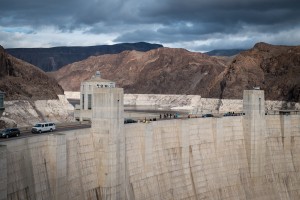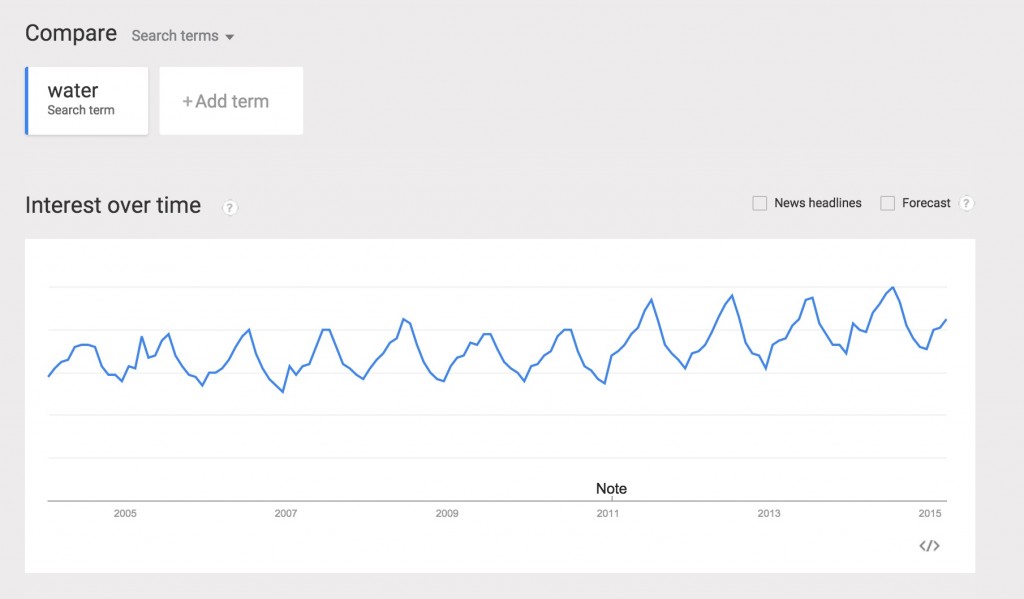The U.S. Bureau of Reclamation’s monthly report forecasting Colorado River Basin reservoir operations for the next 24 months (pdf) came out today, and it had some good news and some bad news for people in the Lower Colorado River Basin worried about dropping levels in Lake Mead.

Hoover Dam and Lake Mead, February 2015, by John Fleck
Mead ended February at a surface elevation of
1,089 feet above sea level, which is just 41 percent full, the lowest it has been at this time of year since they first began filling it in the 1930s. If it drops much further (1,075), Arizona and Nevada will have to reduce their use of Colorado River water, the first shortage since the system was built.
Good news: We’re all but guaranteed at this point (a 95 percent chance) that there the Bureau of Reclamation will release some “bonus water” from Lake Powell to help keep Mead’s levels from dropping further. Under normal operations, the rules require upstream states to release 8.23 million acre feet per year*, but this year the likely release will be 9 million acre feet.
Bad news: Despite the extra water, Mead is forecast to continue dropping – another 6 feet at the end of September compared to a year previous. How could that be?
The answer is what some people are calling the “structural deficit” (though I’ve gotten some pushback on the term). The basic rules that govern water accounting call for normal deliveries to Nevada, Arizona, California, and Mexico that, when combined with evaporation and system losses as the water moves downstream, are greater than the amount of water available:
In the past, water users were able to ignore this problem because “bonus water” above and beyond the minimum 8.23 million acre feet was routine. But because of unprecedented drought (climate change?), the bonus water is gone. Despite the drought, the Upper Basin states have continued to meet their 8.23 million acre foot base requirement, but the days of bonus water are gone.
It seems obvious that the folks downstream would look at this situation and say, “Hey, we’ve got to stop using so much water!” And they have, to a point. In 2007, they signed a shortage sharing agreement that calls for a reduction in Arizona and Nevada’s share if Lake Mead drops below 1,075. The idea here is that they use the water while they’ve got it, and then cut back when the reservoir drops to troublingly low levels.
When basin leaders were hashing out the details of the 2007 agreement, they considered options that would have cut use sooner deeper, and sooner, but they didn’t do it, so this is where we are now.
* Lawyers will argue about this number, but for all practical purposes, that’s the way the system’s being operated.




